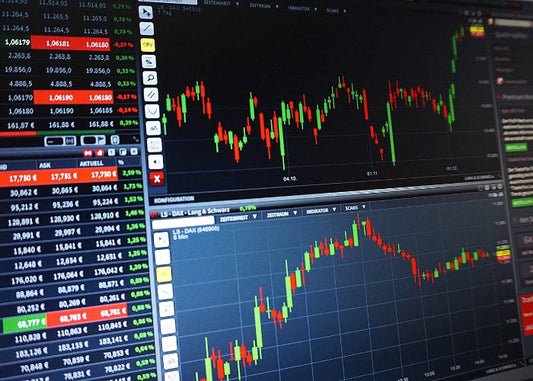What are the main factors behind stock price movements?

Multiple factors play a part in valuation of listed companies shares. However, at the core of price movement is the supply and demand dynamics for the stock.
If supply outweighs demand, the stock price will decrease as sellers are forced to reduce their prices to attract buyers. Alternatively, the price increases when demand outweighs supply, as buyers bid higher for a stock looking for sellers. This is how Stock Exchanges calculate prices by finding the price at which the maximum number of shares are transacted at the moment.
There are different ways to estimate the stock prices movement, but certain factors play a part in the supply and demand dynamics. These factors are split into three main categories: (a) fundamental, (b) technical and (c) market sentiment.
Fundamental factors can be split into two categories, internal and external. Internal factors relate to the company itself and move the stock price based on its earnings and profitability. External factors include the broader environment that the company operates in and consider the political, economic, social, legal and environmental aspects, with the economic factors being critical to a company.
Technical factors relate to the company’s historical share price performance and pertain to the analysis of charts, patterns and behaviour of market participants to certain price levels. Stock market participants use this method to estimate the share price based on recurring themes and chart patterns.
Market sentiment refers to the market participant’s attitude towards a specific stock or financial market. The interaction between supply and demand, fundamentals, technical analysis, news and behaviour affects market sentiment. Confidence in the economy, stock, industry and stock market all play a part in determining the market sentiment.
Fundamental
Earnings
Earnings are the most important factor that affects a company’s value. Earnings refer to the income that a company produces during a given period. These are typically announced every quarter of the year and reflect the company’s financial performance and health.In the long run, no company can survive without earning an income, and therefore there is a high importance placed on a company’s ability to generate income. If earnings are positive and incremental over the quarters or years, it signals a company’s financial health. It may therefore help investors decide whether to buy a stock or not, causing a surge in demand and vice versa.
Economic Data
In this context the key factors to consider are inflation/deflation and monetary policy (interest rates). Inflationary periods are challenging for listed companies as sales can be subdued due to higher prices which consumers are opposed to.Higher interest rates increase borrowing costs for companies and can weigh down on a company’s earnings, valuation and growth prospects. Generally, periods of high interests lead to greater supply (and consequent reduction of demand) , causing stock prices to decline, while periods of deflation may lead to higher demand.
Supply and Demand for Other Asset Classes
Equities as an asset class do not operate in isolation. Various asset classes exist (understood as a group of financial instruments with similar characteristics), including Fixed Income, Commodities, currencies and money market instruments. The supply and demand dynamics of other asset classes often affects the equities pricing.For example, during periods of high inflation and interest rates, investors tend to become risk-averse and search for investments in safer options. Fixed income and Gold (as a commodity) become more attractive in these periods and attract more significant capital at the expense of stocks. Therefore, stock prices decrease as supply increases while demand for safer asset classes picks up.
Technical
Support and Resistance
Support refers to an area on a price chart that acts as a barrier where the stock price tends to stay above or fails to break below, while resistance is where the price tends to remain below or fails to break above. Support and resistance act as demand and supply zones and could be used by investors.Market Sentiment
The “herd mentality” refers to a phenomenon where individuals copy and follow the crowd or what other investors are doing. These types of investors are usually influenced by emotion and jump onto any stock trending either up or down. As more and more herd investors pile into the market, the stock price tends to continue moving in the direction of the trend.In summary, stock prices tend to move due to a cocktail of factors. Investors are best placed to know the multiple facets and act on them as and when they appear in the markets.
No comments
Home
Trive
TriveHub





0 comments